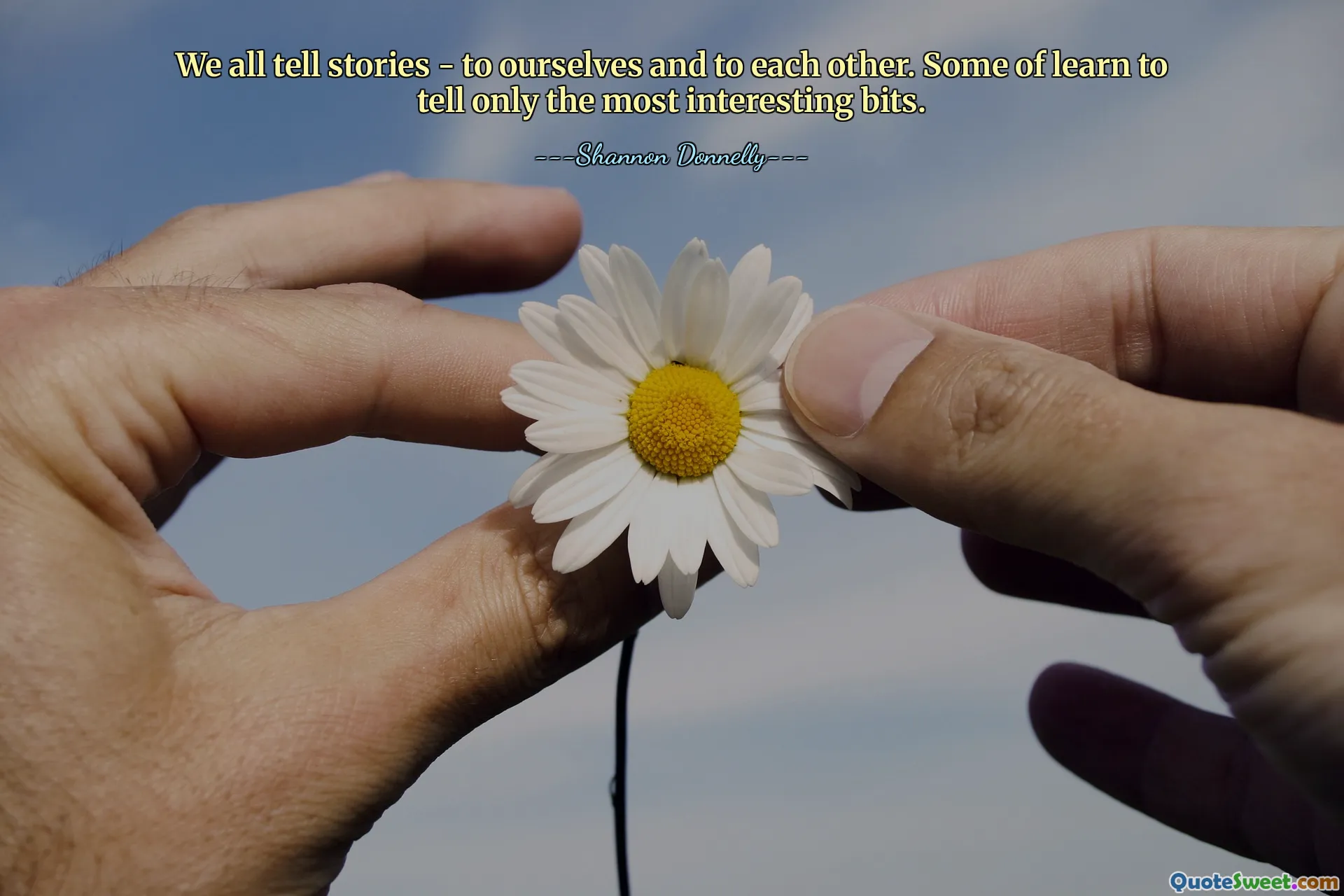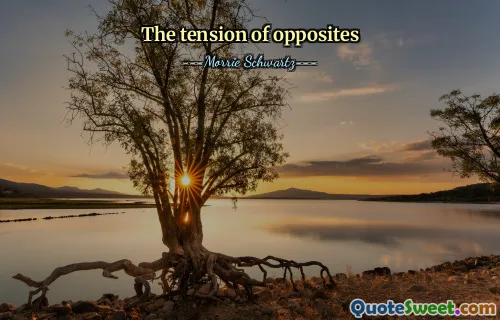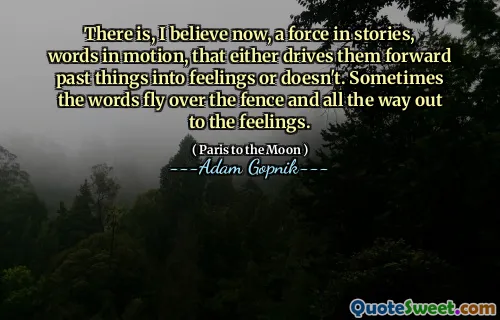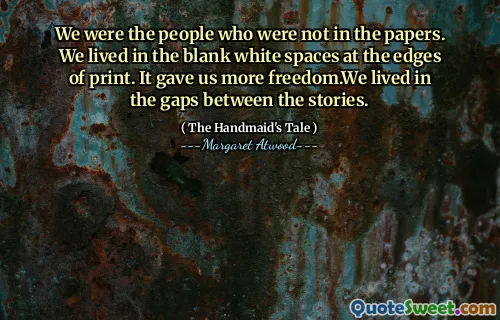
We all tell stories - to ourselves and to each other. Some of learn to tell only the most interesting bits.
Stories are an intrinsic part of human nature; they shape how we perceive our lives and connect with others. This quote highlights a fundamental truth: storytelling is not just about sharing facts, but about weaving narratives that hold meaning and emotion. When it says, "We all tell stories - to ourselves and to each other," it acknowledges that storytelling is both an internal and external process. Internally, we construct stories to make sense of our experiences, beliefs, and identities. Externally, we share these stories as a way to communicate, relate, and influence others.
The second part of the quote, "Some of us learn to tell only the most interesting bits," prompts reflection on the selective nature of storytelling. Often, we curate our stories to highlight the most captivating or entertaining parts, sometimes leaving out the mundane, painful, or complex details. While this can make our narratives more engaging, it can also flatten the reality, leading to a polished but partial truth. This selective storytelling serves social purposes—entertaining an audience, crafting a personal image, or protecting vulnerabilities.
However, editing our stories is a double-edged sword. On one side, honing our narratives can sharpen communication and emphasize key lessons. On the other, it risks loss of honesty and depth, possibly perpetuating misunderstandings or superficial connections. Reflecting on this balance inspires us to consider how we tell our stories with greater awareness—embracing authenticity while recognizing the power of narrative framing. Ultimately, stories define identity and relationships; how we tell them shapes not only how others see us but also how we understand ourselves.
---Shannon Donnelly---








